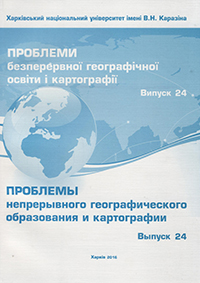Engaging student expeditionary units to land work at aerospace polygons
Abstract
To organize the aerospace polygon it is necessary to conduct a large number of measurement and descriptive works. First and foremost is working with the fund and cartographic material. The map of the landfill shows the most important objects and phenomena: quarries, sinkholes, deep ravines, industrial, residential and protected areas. Organization of the aerospace polygon operation involves large labour costs. To train professionals on the ground research of the earth’s cover remote sensing, we have organized a permanent student expedition. Prior to the start of work, students listen to a series of introductory lectures on remote sensing, principles of ground work, methods of statistical evaluation, basic methods of data collection and processing. This article covers one direction of work - collecting and processing of phytometric data of crops and steppe vegetation in the Streletskaya steppe in the Central Chernozem nature reserve. The work is carried out on the test area of Kursk aerospace polygon, organized on the basis of Kursk biospheric station of the Institute of Geography RAS. A generally accepted method of test platforms is used on the routes. The results of measurements and observations are recorded in a field book. Species diversity, plant height, projective cover and crops density are determined on the sample area by the instrumental and visual methods. The rest phytometric indexes are calculated in laboratory conditions. The students can use the resulting material when writing articles, course and degree works. At the site, students acquire skills of working in field conditions with natural objects, collecting and processing of information by various methods, expanding understanding of the need and importance of the earth surface study by remote sensing methods.
Downloads
References
2. Vasilevich, V.I. (1969). Statisticheskie metody v geobotanike [Statistical methods in geobotanic]. Leningrad: Nauka, 232.
3. Bychkov, D.M., Gavrilenko, A.S., Egorova, L.A. etc. (2012). Distancionnye issledovanija rastitel’nyh pokrovov i lesov radiolokacionnymi metodami [Remote monitoring of the vegetation cover and forests with radar methods]. Available at: http://nauchebe.net/2012/07/distancionnye-issledovaniya-rastitelnyx-pokrovov-i-lesov-radiolokacionnymi-metodami/
4. Malyshev, V.B., Zhemerova, I.K. (2014). Razrabotka i sozdanie bazy dannyh spektral’nyh i predmetno-specificheskih harakteristik ob”ektov zemnoj poverhnosti [Database development and creation of spectral and subject-specific characteristics of objects on the Earth’s surface]. The problems of continuous geographical education and cartography, 20, 76-80.





